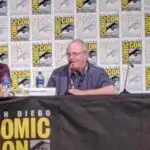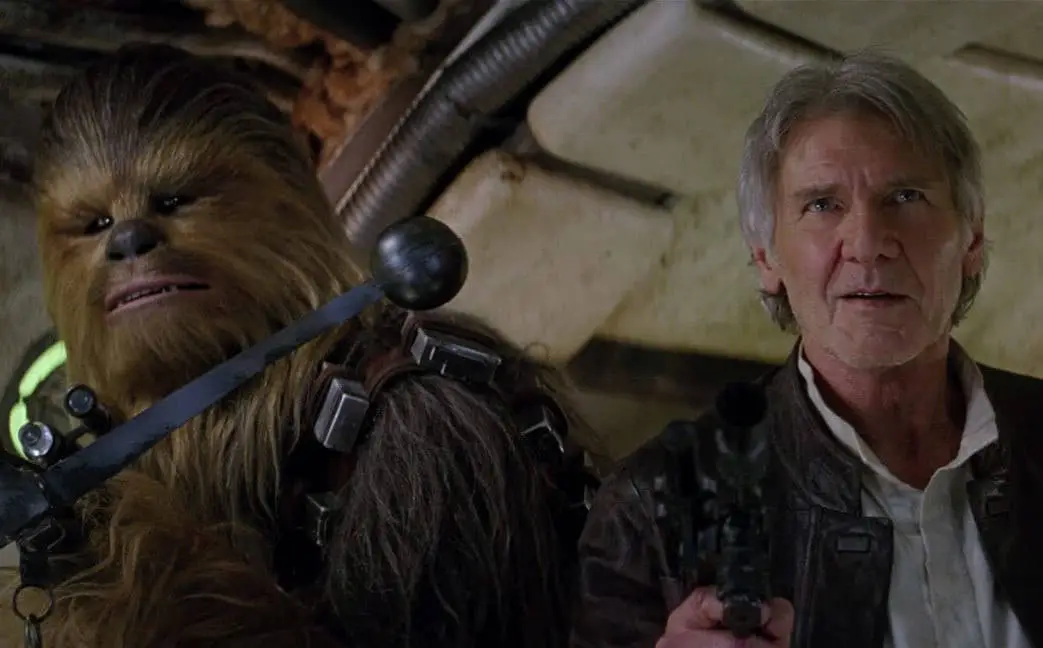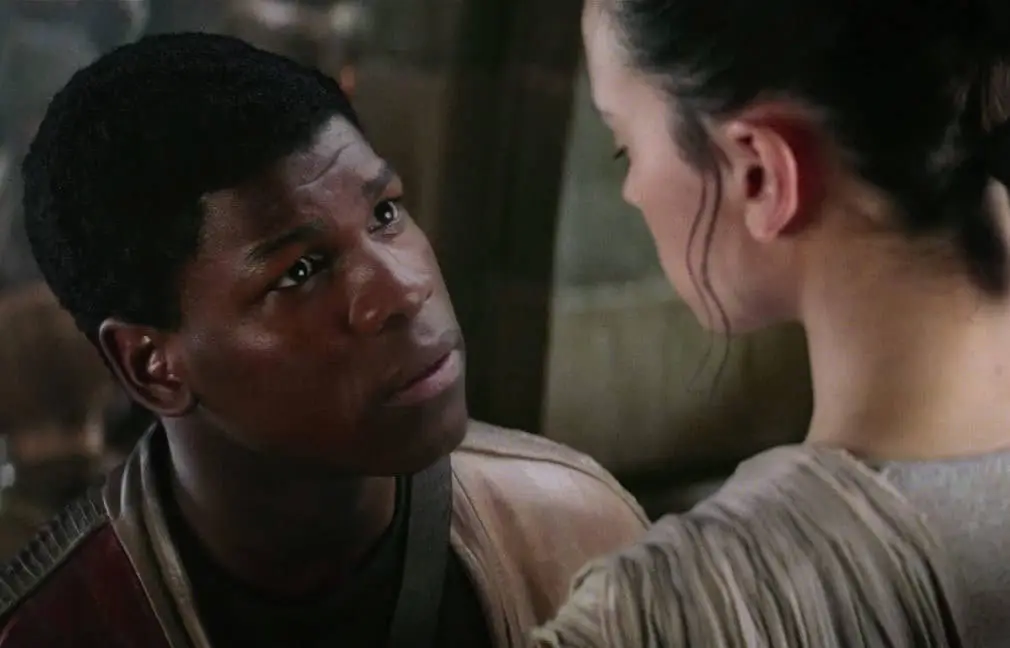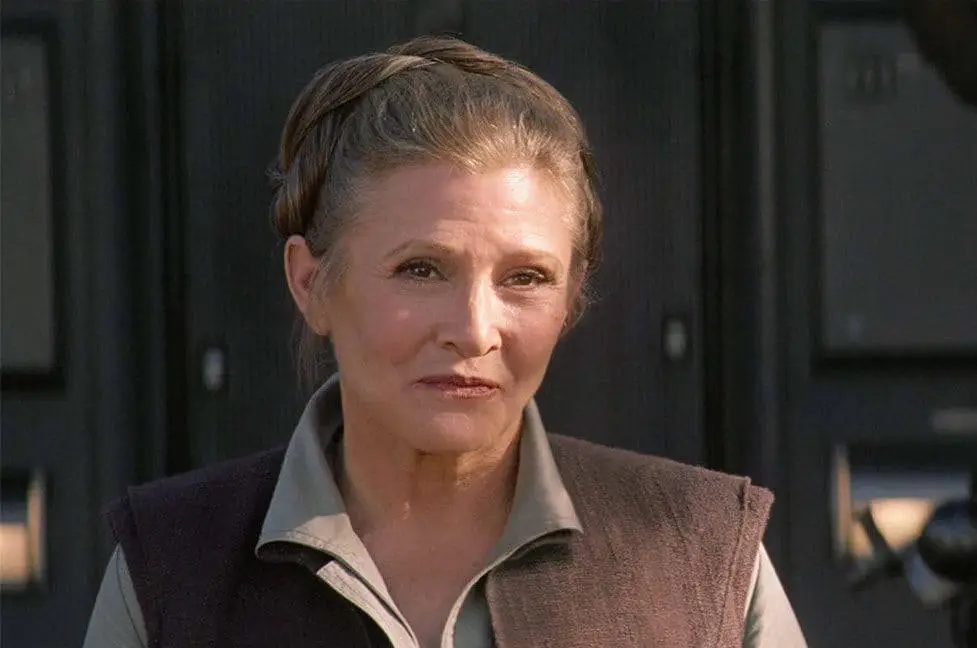In the run-up to the release of Star Wars: The Rise of Skywalker and the end of the Skywalker Saga, we will be taking a look back at all of the Saga films and re-evaluating them and their legacy as a whole.
Star Wars: Episode VII The Force Awakens
The Star Wars series has long sat in the strange catbird seat of being both the forerunner of the modern big-budget tent pole and nothing like them. As a mega-budget franchise with a giant global fan base, it produces a consumable for a large and varied audience and also feeds an extensive merchandising business.
As the work of a single artist with no corporate overlord or shareholders to appease, it was a singular vision of an auteur telling a specific story in a specific way. It was a dichotomy that, at its best, enhanced the blockbuster form by offering unexpected depth and artistry; at its worst, it became a schizophrenic attempt to appease two competing forces that couldn’t sustain themselves under pressure.
Then George Lucas sold the franchise to The Walt Disney Company, and the question became what Star Wars would be without its auteur. Would it continue to focus on expanding its world and mythology and taking risks in storytelling and aesthetics? Or would it move towards an easier-to-understand, crowd-pleasing endeavor in order to ensure its points don’t get lost within waves of experimentation?

The jury is still out on what exactly the answer will be, but there are some hints from the series’ initial return. With a tremendous amount of money tied up in acquiring the series, any chance of negative fan reaction was pushed to nil or as close as possible.
Everything popular about the series was brought back – all the surviving popular characters, all the oft-mentioned aesthetic requirements for Star Wars to be Star Wars and was handed to J.J. Abrams, a competent craftsman of action-adventure entertainment who had been weaned on the series as a young man (along with at least half of Hollywood). The result is an extremely easy-to-watch piece of light entertainment which, despite moving the narrative into the future, is permanently backward-looking.
This begs the question, in a series that, from its earliest moments, has been about experimentation and boundary-pushing, can a film that roundly rejects both still be Star Wars? Seven films later, the question at the heart of A New Hope is still unanswered and maybe unanswerable – what is Star Wars?
Looking back at the previous films, it’s very clear that the push aesthetic and technological change has not just been about experimentation but also about maintaining the suspension of disbelief in an unreal world. Beyond just Lucas’ desire to see new and different things was an understanding that the world grows and changes as well, and a false world needs to replicate that reality if it’s going to sustain believability.
The cars we drive have changed radically over 30 years, and the planes that fly overhead and the clothes we wear have all changed notably over the decades. Making the Star Wars universe do the same enhanced the reality it was trying to create by replicating our own experience with life. It is, again, the logical end result of the ‘used universe’ philosophy, the essential component of Star Wars’ mise en scène.
An argument can be made that Star Wars doesn’t need any of that, that all it needs is an emotional connection between the characters and the audience, and the rest is window dressing at best and a distraction at worst. But if all of that work, all of the experimentation and push against repetition, was an inherent part of the series before, what do you have when it is removed?
You have interesting characters, at least for a while. The series, and the original films in particular, are full of iconic characters (a skill Lucas doesn’t get enough credit for), and most of them make a return, particularly in this first sequel trilogy installment. Still, Daisy Ridley’s Rey and John Boyega’s Finn can stand toe toe-to-toe with anyone from the other films, and sequences featuring just the two of them fly through in a mad rush, replicating the series at its best.
The key word is replicating. The plot of The Force Awakens is nearly identical to A New Hope, even losing track of its inciting MacGuffin (a map to the missing Luke Skywalker) halfway through the film to focus on plot elements even more reminiscent of A New Hope. Vehicle, character, and costume designs are tweaked but left mostly unchanged, as are plot elements and characterization.
This can work. The James Bond series, controlled by a single family but certainly with very commercial goals in mind, is proof of that. Though they’ve had their ups and downs over the years (though those are considered to be changes frequently), they have remained fairly consistent over 50 years. They do so mostly by sticking to an easy-to-follow formula honed from decades of making the same films over and over and corresponding audience responses. It doesn’t offer much chance for artistry or experimentation but also keeps a series from landing in the pitfalls that kind of discursions can create.
It would be easy to say that’s enough, and no one could fault anyone who did. But Star Wars became what it is precisely by not doing that when it would have been easy to do so. Changing course to focus on the past is, in many ways, the antithesis of what the saga has been (something The Last Jedi will actively point out).
Eventually, the legacy characters themselves are returned to not only take the focus from the new characters but also revert to their previous forms, undoing any growth from previous chapters while simultaneously focusing on the current plot, leaving the retreat unexplained. The only thing that has changed is their reception from other characters as they stop being treated as real people and start being viewed in their context as famous characters from popular films.
The choice to make icons of characters and stories (which is very different from having them organically become so) freezes them in place, unable to be changed. Worse, it requires everything around them to be reorganized to fit the point they are frozen at, whether it matches the current context or not. If the form is a function, then the function forms; wanting the story to only look a certain way means wanting the elements of the story to only play out a certain way.
If the height of the story was reached with underdog rebels fighting Stormtroopers, that becomes repeated ad nauseam, and the larger plot is twisted to make it work or ignored in favor of the rush of the moment. None of which, at a conceptual core, were ideas that had been part of Star Wars before The Force Awakens. In that sense, at least, Episode VII is different from everything that came before it.
But it’s awfully fun, so who cares? Looking at a subject critically means assuming from the top that something can be fun but not good, just as it can be good but not fun. It’s a strange idea for a blockbuster series whose primary goal is to be fun, but there it is. No one can deny The Force Awakens isn’t fun, but at what price?
The Force Awakens is what the series never was before… empty comfort food. It doesn’t really do anything wrong, but that is not the same as doing everything right.
Rating: 6.5 out of 10 (Buy The Force Awakens at Amazon.com)
NEXT: STAR WARS: EPISODE VIII THE LAST JEDI

Joshua Starnes has been writing about film and the entertainment industry since 2004 and served as the President of the Houston Film Critics Society from 2012 to 2019. In 2015, he became a co-owner/publisher of Red 5 Comics and, in 2018, wrote the series “Kulipari: Dreamwalker” for Netflix. In between, he continues his lifelong quest to find THE perfect tomato soup and grilled cheese sandwich combination.


